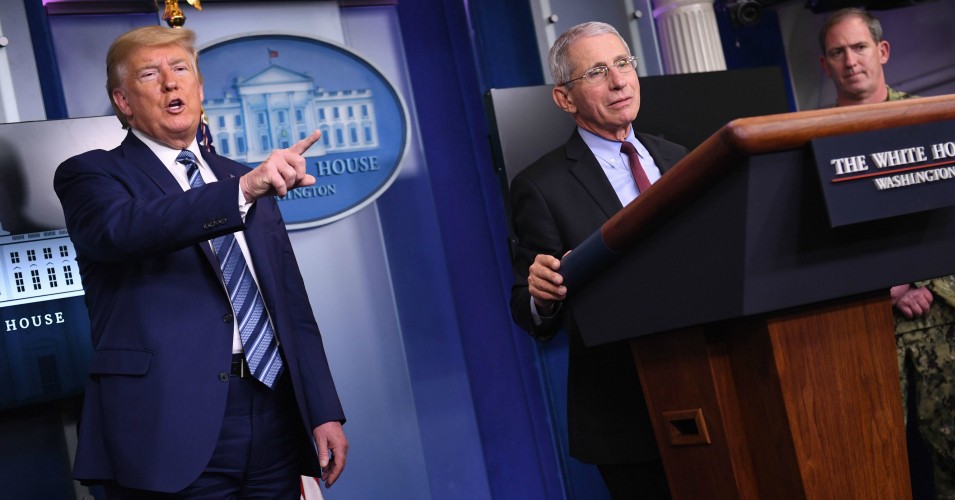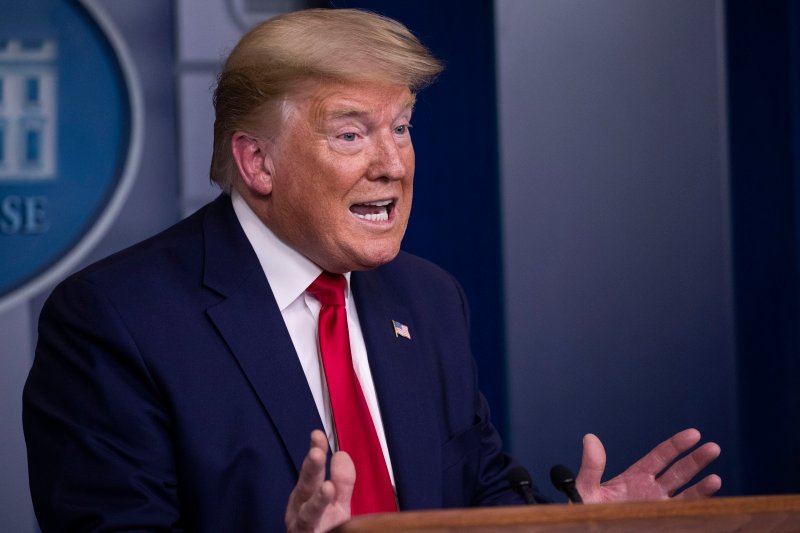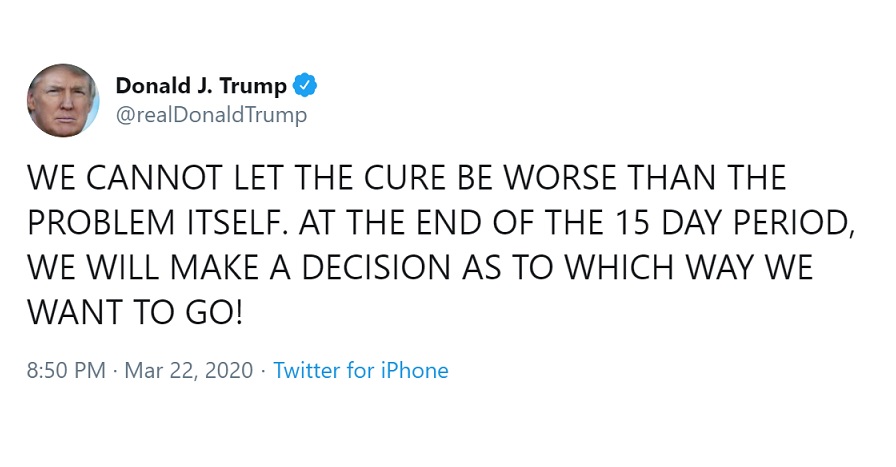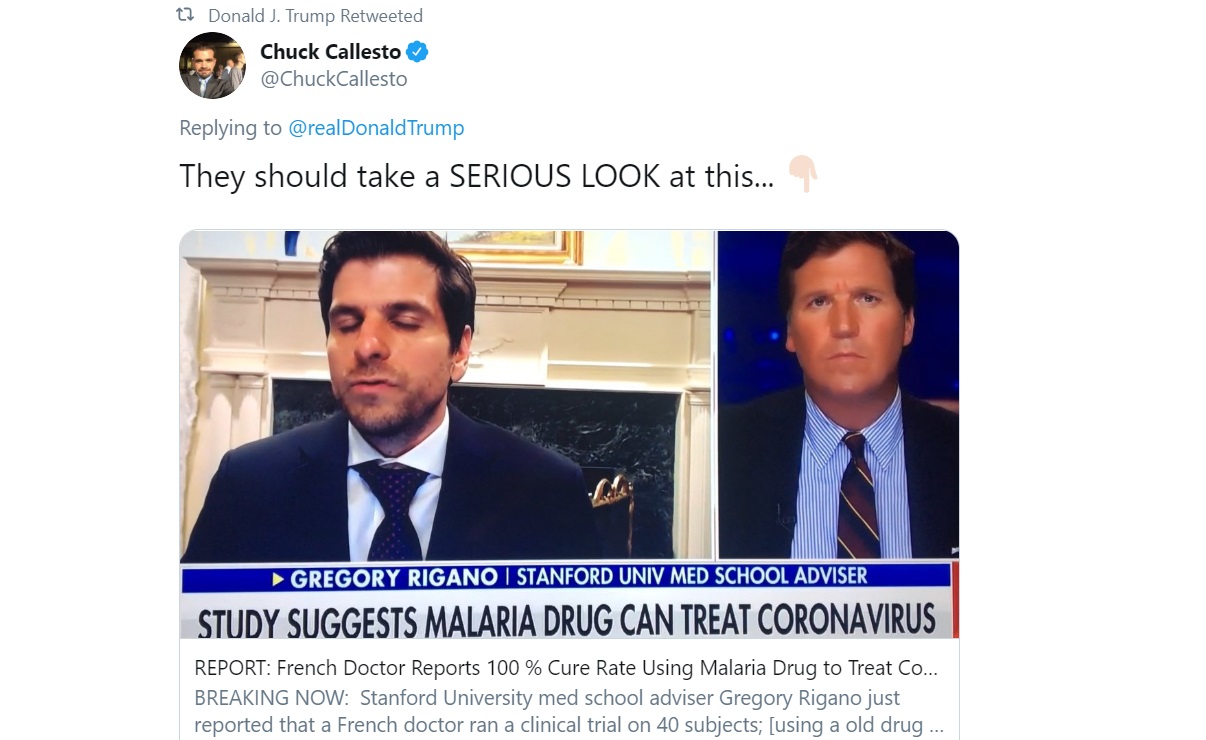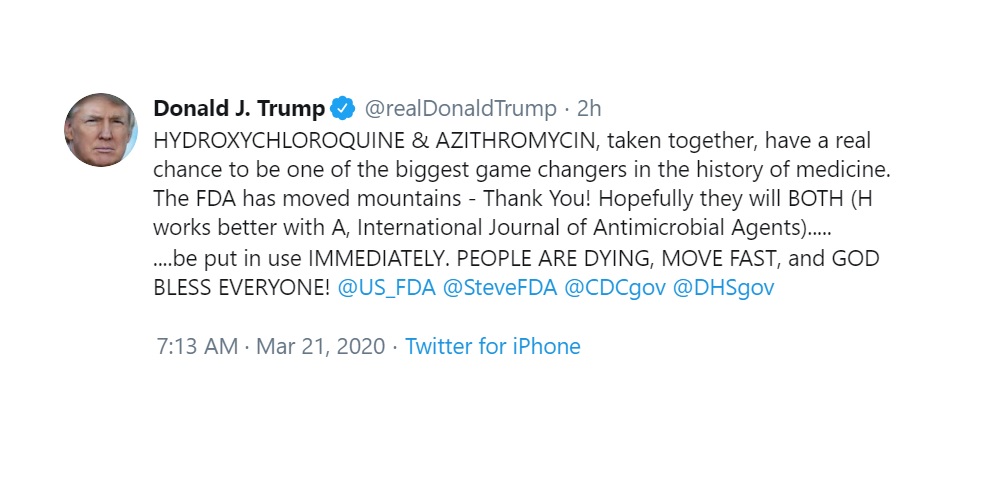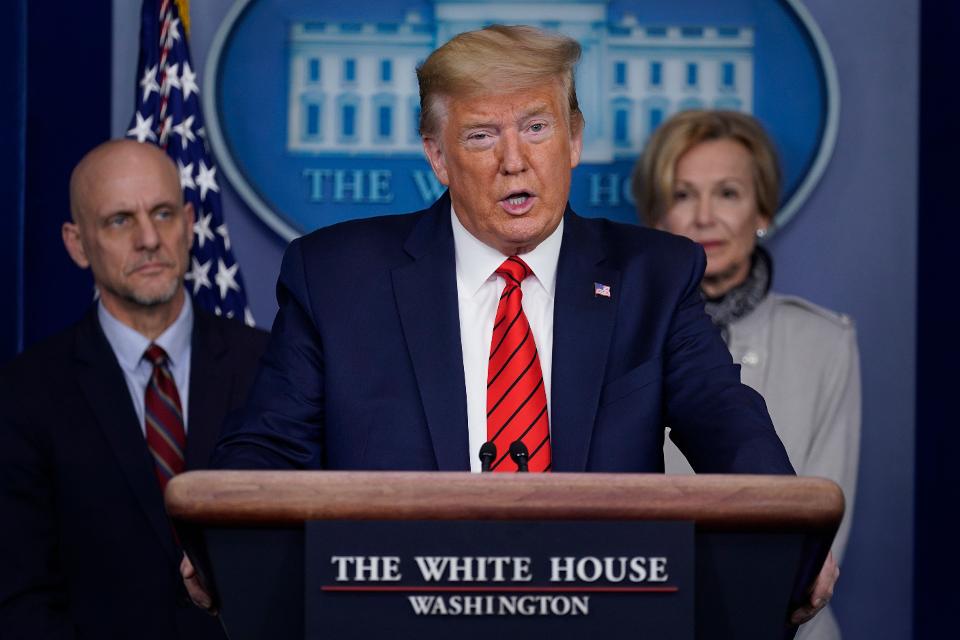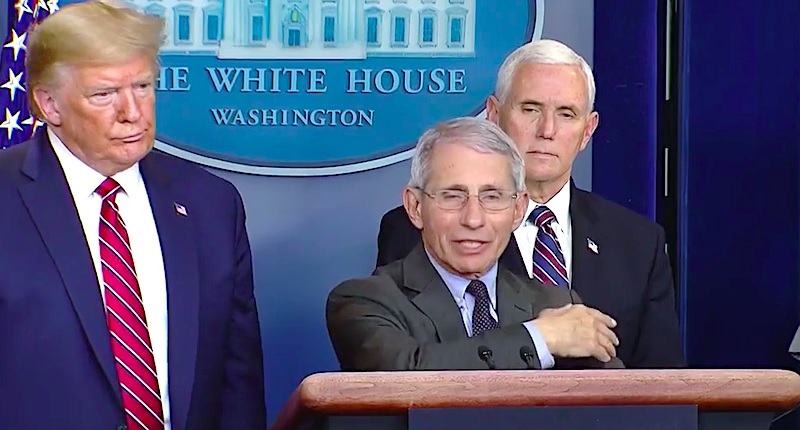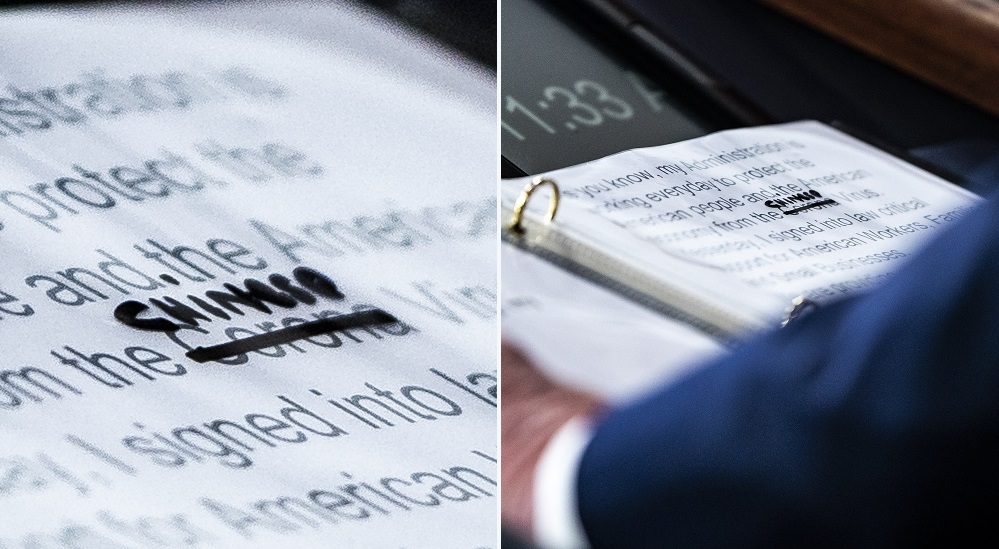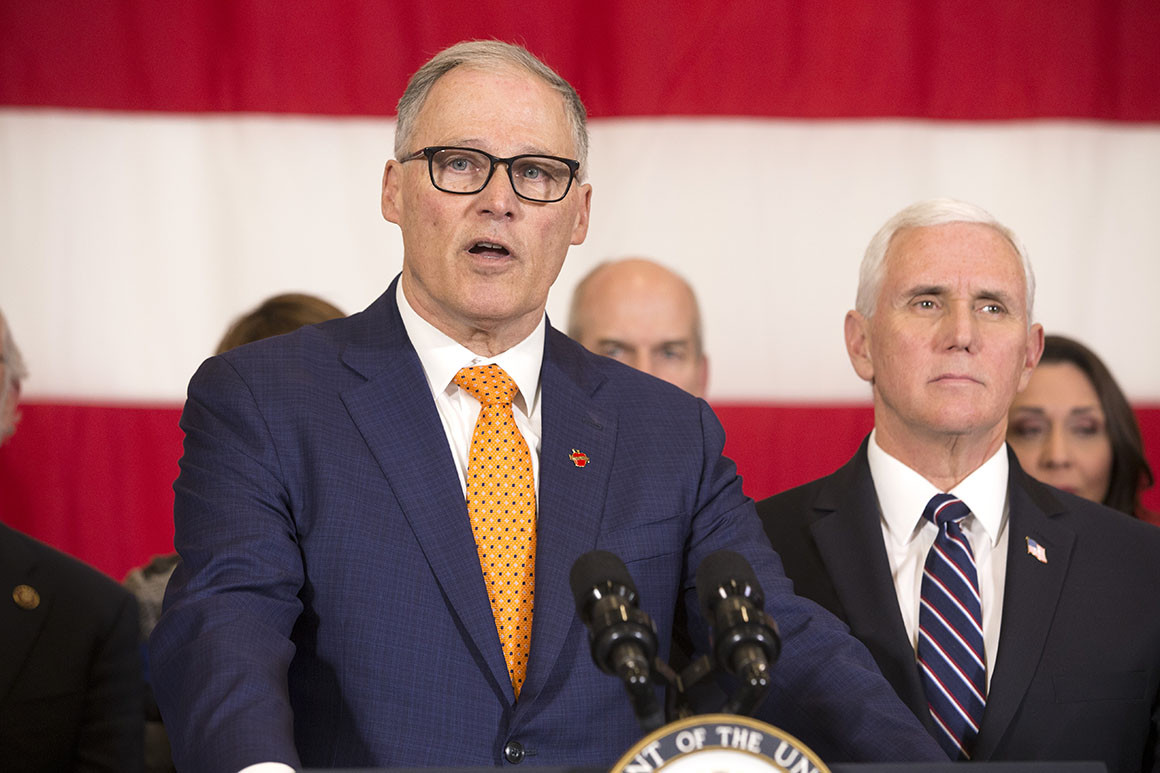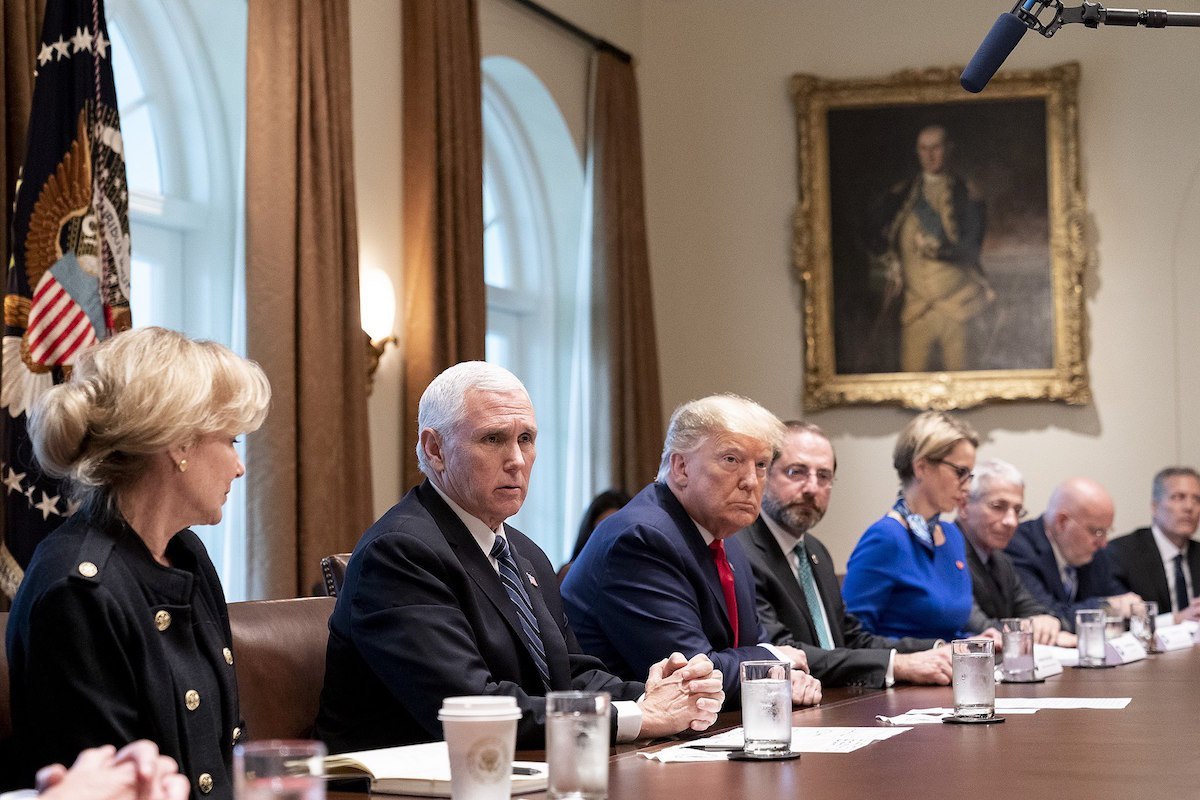President Donald Trump on Monday unleashed a barrage of posts spreading conspiracy theories about the coronavirus, chastising the World Health Organization for its early messaging, attacking his political enemies and the media, and promoting a dubious article that suggested a miracle cure was at hand.
In more than a dozen tweets and retweets that started near midnight, the president signaled his anxiety about the economic toll the disease was wreaking on the American economy and suggested that he could ease up on 15-day guidelines the White House imposed a week ago.
Trump also suggested he would support the decision of Japanese Prime Minister Shinzo Abe over whether to cancel the Tokyo Olympics and expressed opposition to the release of some inmates from crowded jails, which is happening in several states as a public health precaution for low-level offenders and the elderly. Abe on Monday reportedly hinted the games might need to be postponed.
“WE CANNOT LET THE CURE BE WORSE THAN THE PROBLEM ITSELF,” Trump wrote in a tweet posted near midnight on Sunday. “AT THE END OF THE 15 DAY PERIOD, WE WILL MAKE A DECISION AS TO WHICH WAY WE WANT TO GO!”
The president then retweeted, or posted to his own account, a number of replies, including one from a man named Chuck Callesto, who is identified as a “Digital Real Estate Manager,” promoting a possible cure.
“They should take a SERIOUS LOOK at this…” Callesto wrote in the tweet posted to the president’s account, with a link to a story with the headline “REPORT: French Doctor Reports 100 % Cure Rate Using Malaria Drug to Treat Corona Virus.”
There is no known cure or treatment for coronavirus, though scammers have sought to cash in on the panic it has caused. On Sunday, the Department of Justice announced that it has taken its first action in federal court to stop COVID-19-related fraud, following Attorney General William Barr’s direction to prioritize prosecution of illegal conduct related to the pandemic.
The DOJ said in a press release that it recommends that Americans ignore “offers for a COVID-19 vaccine, cure, or treatment. Remember, if a vaccine becomes available, you won’t hear about it for the first time through an email, online ad, or unsolicited sales pitch.”
The White House and the Centers for Disease Control and Prevention did not respond to requests for comment on the president’s messages on Twitter.
In other messages, including tweets and retweets, the president attacked former Vice President Joe Biden, the front-runner for the Democratic nomination for president, as well as The New York Times, the WHO, and China, which he suggested was manipulating health data.
In several posts, the president suggested that he was looking to ease the coronavirus-related guidelines that the White House imposed last week for a 15-day period that will end next Tuesday.
After the initial all-caps message, the president retweeted a number of accounts suggesting that future guidelines from the White House will call for isolating high-risk groups only.
“Flatten the curve NOT the Economy,” an account retweeted by the president wrote.
The current federal guidelines, which are separate from the mandatory restrictions put in place by a number of states, call for individuals not to congregate in groups of more than 10, to avoid discretionary travel and to refrain from dining or drinking at restaurants, bars and food courts.
Tens of millions of Americans remain under virtual lockdown because of state-level actions to close businesses and keep people indoors. California and New York, the nation’s most populous states, have effectively put their economies on pause.
The president’s tweet storm came as coronavirus surpassed 350,000 confirmed infections around the world, with a death toll rising past 15,000. Worldwide, cases have doubled in the past week, according to the WHO, and deaths have nearly tripled.
The effect of the disease and containment measures meant to stop it have tanked markets, with the worst expected to come. Weekly job loss claims are soon expected to hit records, dwarfing the numbers seen during the 2008 recession.
The president’s tweets come as the administration is wrestling with the appropriate response to the virus moving forward. Officials worry that the first measures, called for by public health experts, may have been too harsh, and are considering separate guidelines for the hardest-hit states of California, New York and Washington, according to NBC News. The guidelines for other states could call for a return to business.
Trump has sought to blame China, where the virus originated, for the disease, dubbing it the “Chinese Virus” against the recommendations of public health officials in his administration. In his posts on Monday, Trump suggested without evidence that China was putting out false information about coronavirus.
He retweeted a post sent by his son, Donald Trump Jr., promoting a story in the conservative outlet Breitbart News with the headline “WHO Spread False Chinese Government Propaganda: Coronavirus Not Contagious Among Humans.”
The WHO did not return a request for comment.
Another post retweeted to Trump’s timeline asks why people should take Chinese health statistics “at face value” given its cover-up of the Tiananmen Square massacre.
Trump has criticized China during his public press briefings from the White House for not disclosing information about the virus earlier, though he has also expressed sympathy for the hard-hit nation and President Xi Jinping.
“China has gone through hell over this. They’ve gone through hell. And I’ve had conversations with President Xi. I just wish they could have told us earlier. They knew they had a problem earlier,” Trump said at Saturday’s briefing.
[CNBC]
